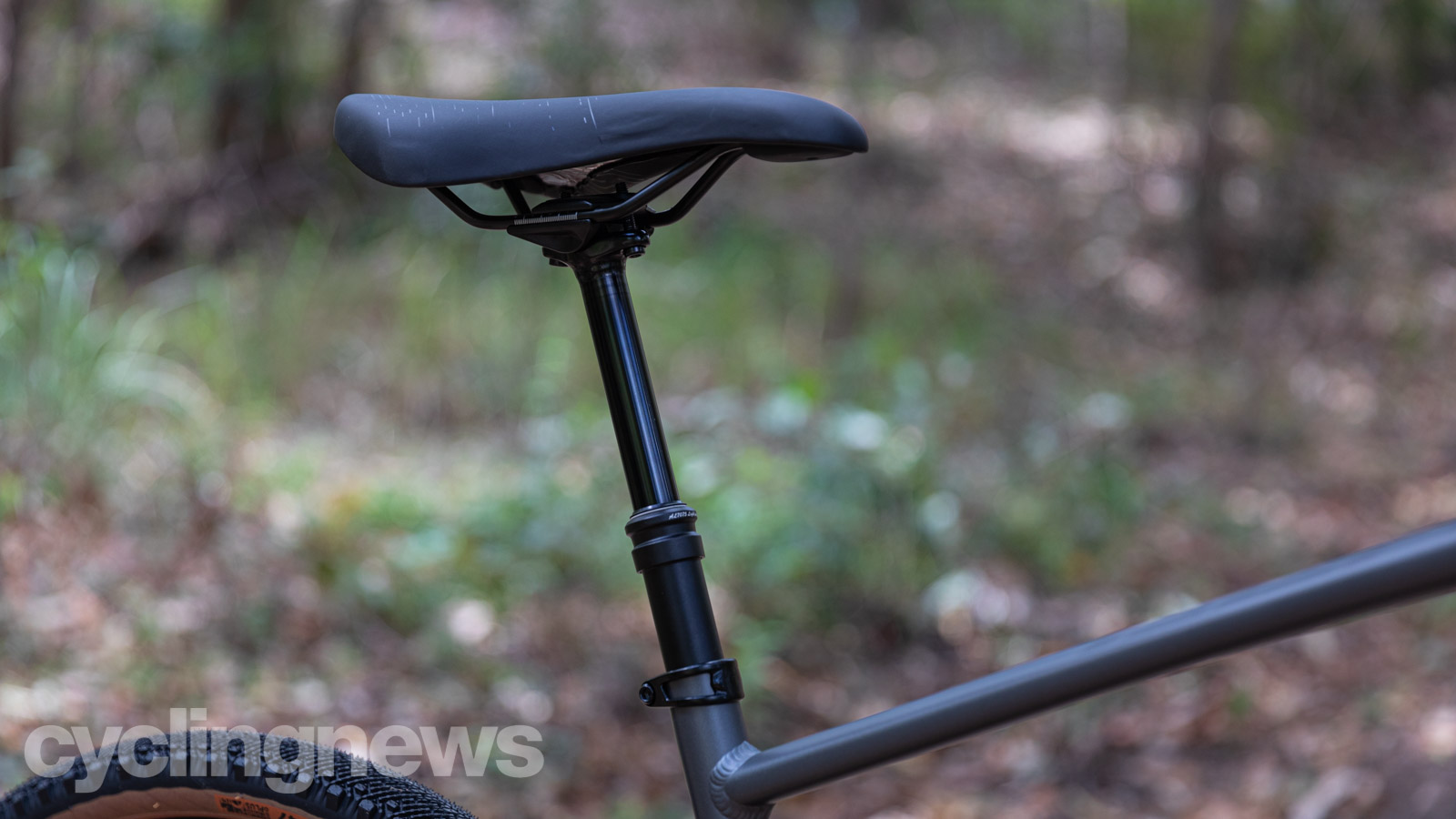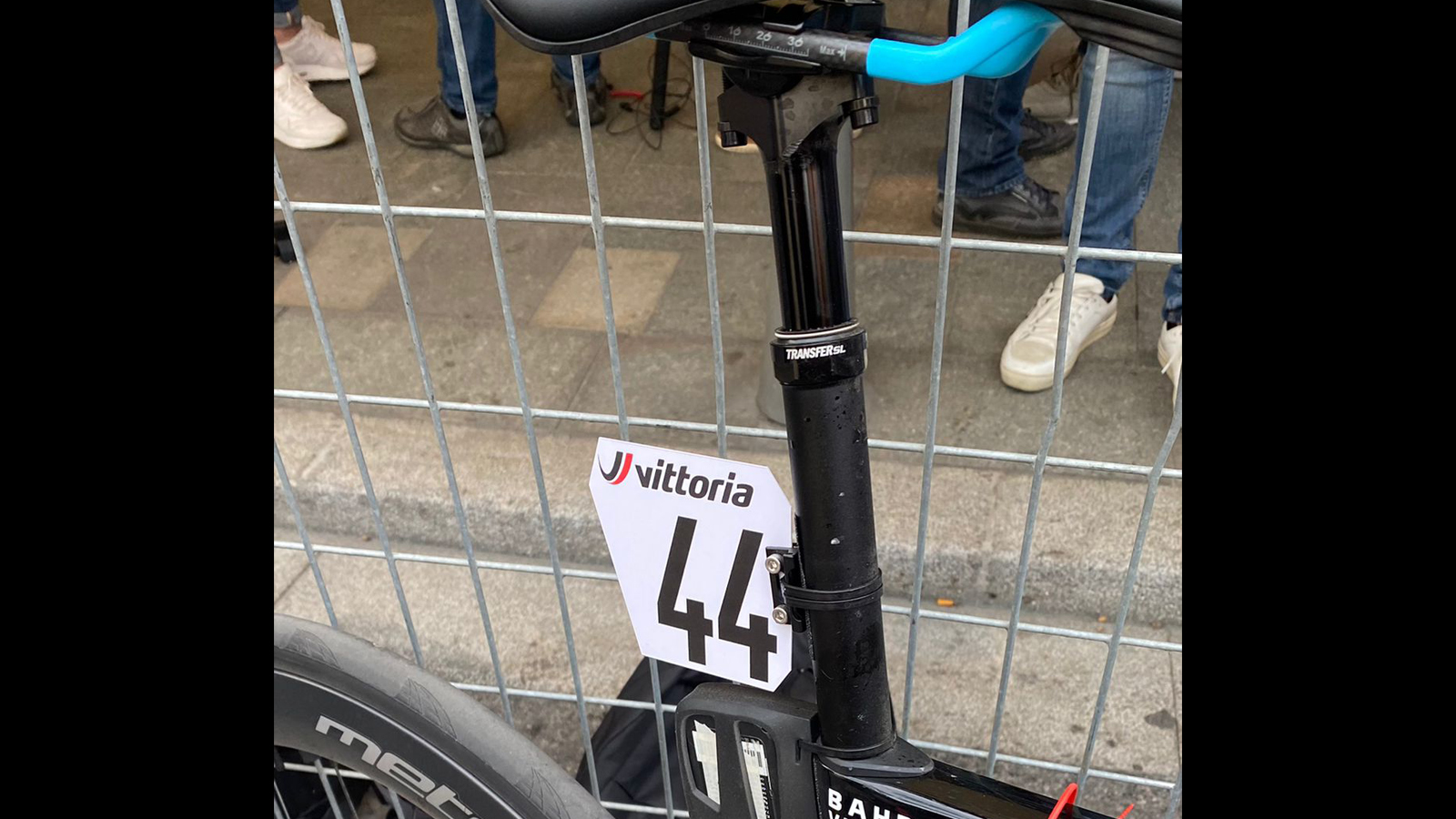What is a dropper seatpost?
A staple in mountain biking, a gravel regular and now seen in the pro peloton, but what exactly is a dropper post?

They’ve long been a staple of the mountain bike scene, and feature frequently on gravel bikes from the more adventurous end of the spectrum, but rarely if ever are they seen on road bikes. However, after Matej Mohorič won Milan-San Remo with a spectacular dropper-assisted descent, many of us roadies are now wondering: what exactly is a dropper seatpost?
For those of you already familiar with the tech, perhaps you’re wondering if you need to head to your local bike shop and buy one to get the most out of your bike. We will attempt to tackle that issue too, later on.
What is a dropper post?
The clue is very much in the name - a dropper seatpost in any form allows the rider to easily drop (and then raise) their saddle on the fly. Modern units are telescopic in nature, but the technology began with the Hite-Rite back in the early days of 26in mountain biking.
This design was somewhat rudimentary, using a simple spring with one end attached to the seatpost clamp, and the other clamped to the seatpost itself. When the quick release seat clamp was opened, mountain bikers could drop their saddles and descend sun-drenched Californian hillsides, before releasing the clamp again (with their weight lifted off the saddle) to have the seatpost spring back to normal height.
Fast forward a few decades and the rigmarole of reaching down to open a lever to drop your saddle is long gone (in most cases). Nowadays the majority of dropper posts are actuated remotely from the handlebars, either by a cable or electronically, though some simple units opt for a lever tucked under the nose of the saddle that riders can operate much like an office chair.
Modern dropper seatposts consist of a telescopic unit much like a single leg of a suspension fork. The outer sleeve slides into your frame and deals with the clamping forces, while the inner piston is free to move up and down a set amount, depending on the model. The amount of height variation is known as stroke length.
In a similar way to the aforementioned office chair, and usually through pneumatic means, if you depress the dropper lever at the bars with your weight on the saddle you will press it down. Press the lever while it is unweighted and it will return to its original height. Without going deep into blueprints and exploded diagrams, that's really all there is to it.
Get The Leadout Newsletter
The latest race content, interviews, features, reviews and expert buying guides, direct to your inbox!

Do I need a dropper seatpost?
There’s a good reason dropper posts are ubiquitous in mountain biking and common in the world of gravel: they make life easier when descending. Lowering the saddle allows you to move the bike more underneath you, making for better handling, and also has the added benefit of lowering your centre of gravity. It means you can throw your weight rearward more easily, facilitating better braking, and allowing a more aerodynamic position on the straights.
While these benefits are well understood off-road, where top tubes are more heavily sloped and the stroke of the posts can be larger, do these benefits translate onto the tarmac? Is a dropper post going to improve your riding experience?
In an isolated case of a single descent from the point of view of speed it will in all likelihood improve things for you by reducing your frontal area, but by how much is impossible to quantify without a short wind tunnel session. So if absolute speed downhill is your goal then it may be the right choice for you.
Despite the potential speed gains downhill, dropper posts are all based on round tubes, and so if you have an aero bike you’ll probably struggle to install one into your frame, as most modern aero bikes have proprietary seatpost shapes. Some might also contend that any additional time gained descending would be negated over the ride as a whole by replacing an aero-optimised tube with a round one, but this is also purely speculative without a much deeper dive into the data.
Aesthetically, they are also going to split opinion. Road bikes are all about clean lines nowadays, and adding another button to the cockpit along with a more bulbous option beneath your saddle might not be the look every budding pro wants. What’s more, if you’re running an internally cabled bike there simply won’t be ports drilled to accommodate a dropper, meaning you’d have to opt for a more expensive wireless option.
In my opinion, the best use case for a road dropper is for those who find descending an ordeal rather than a joy. Many of us have had our confidence knocked after a crash while descending, and having the option to improve the handling of the bike when the road points downhill may be just what we need to get back on the horse, so to speak. They can be particularly effective at reducing that feeling of being pitched over the bars when things get very steep, and the additional braking benefits will help too.
So a dropper post may offer a little more confidence, and perhaps speed, downhill. But it will also bring with it aerodynamic and weight penalties that may slow you down elsewhere on the road.
If you’re dropper-curious, our sister Bike Perfect site has guides to the best dropper posts and the best short-travel dropper posts.

Will joined the Cyclingnews team as a reviews writer in 2022, having previously written for Cyclist, BikeRadar and Advntr. He’s tried his hand at most cycling disciplines, from the standard mix of road, gravel, and mountain bike, to the more unusual like bike polo and tracklocross. He’s made his own bike frames, covered tech news from the biggest races on the planet, and published countless premium galleries thanks to his excellent photographic eye. Also, given he doesn’t ever ride indoors he’s become a real expert on foul-weather riding gear. His collection of bikes is a real smorgasbord, with everything from vintage-style steel tourers through to superlight flat bar hill climb machines.